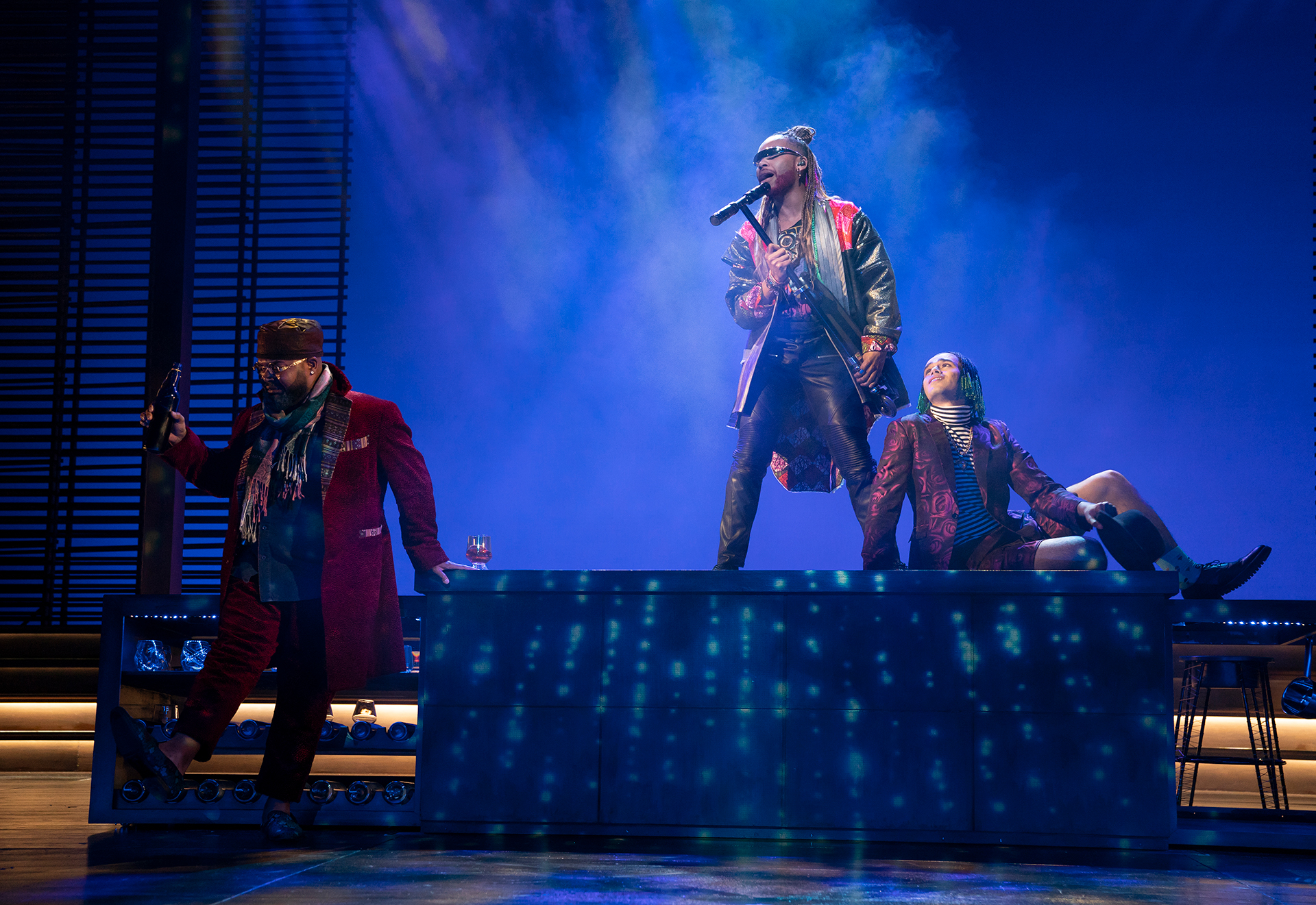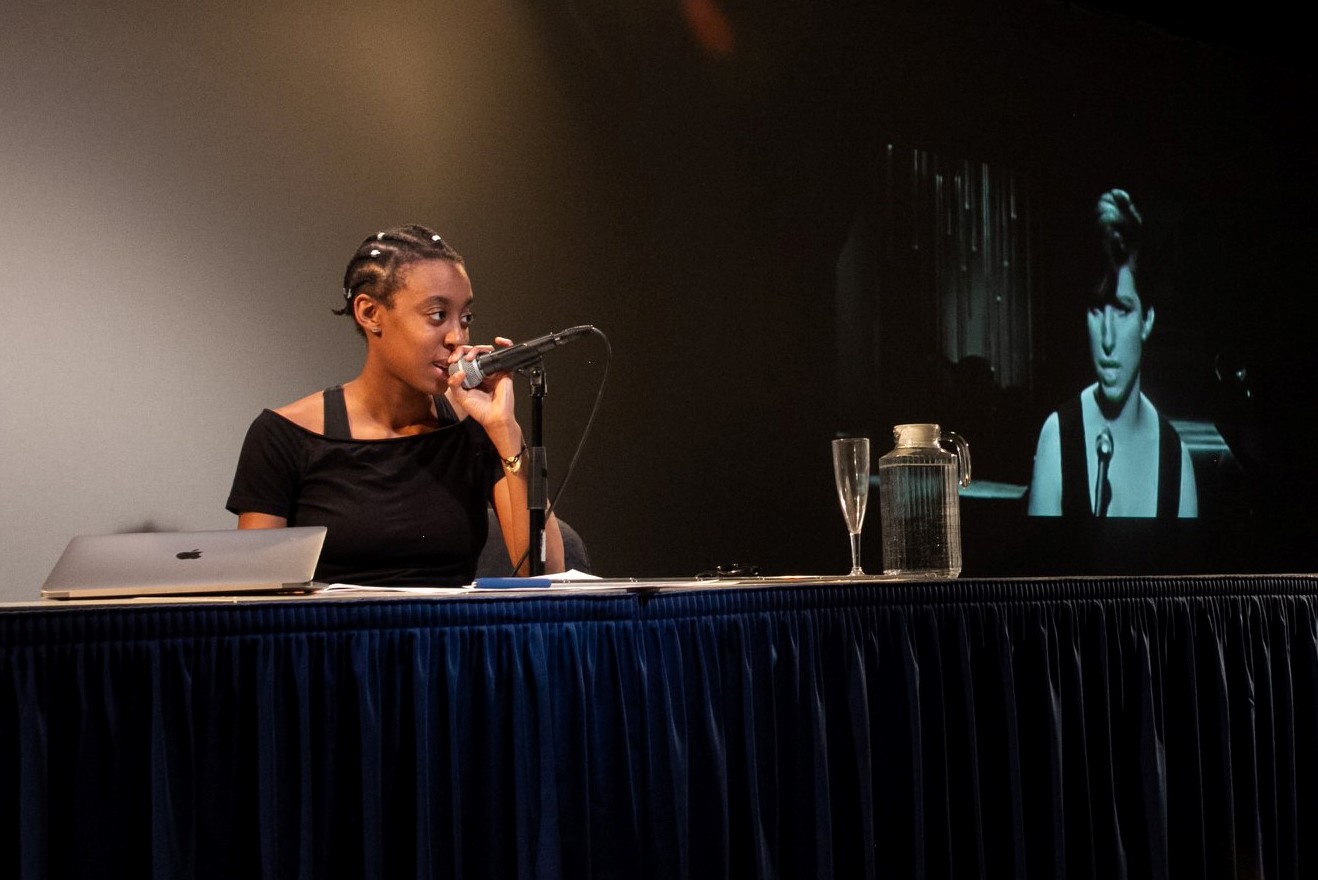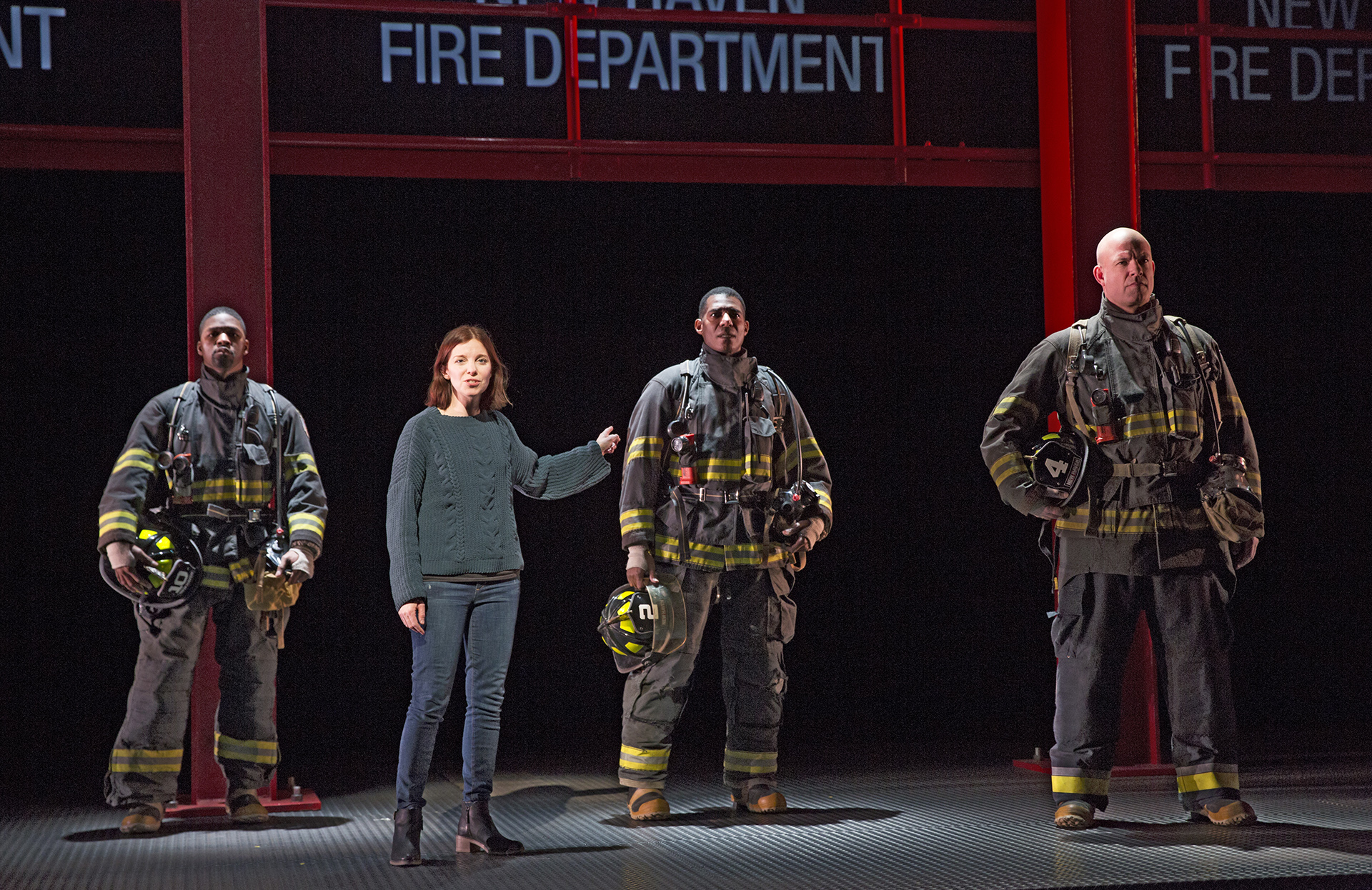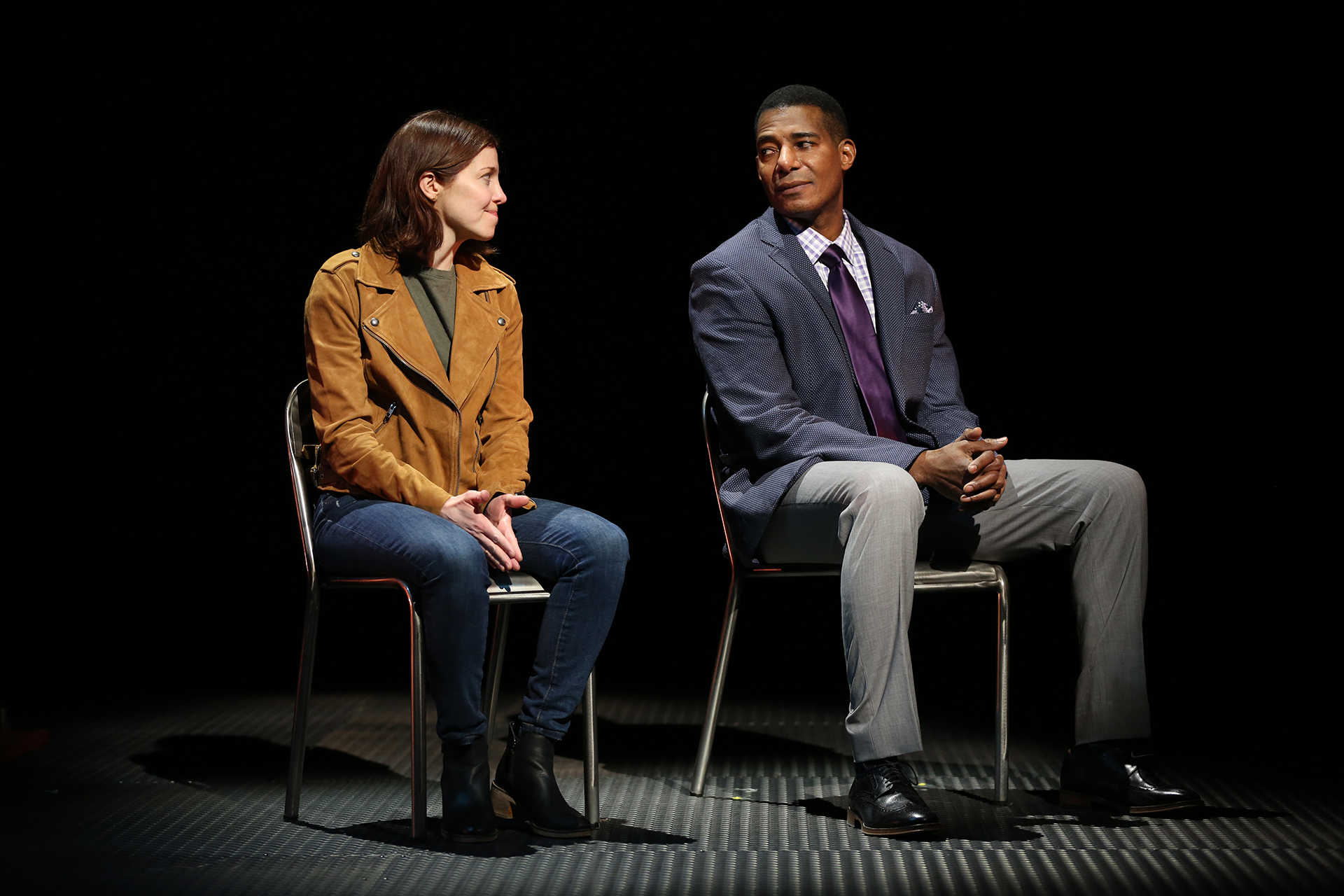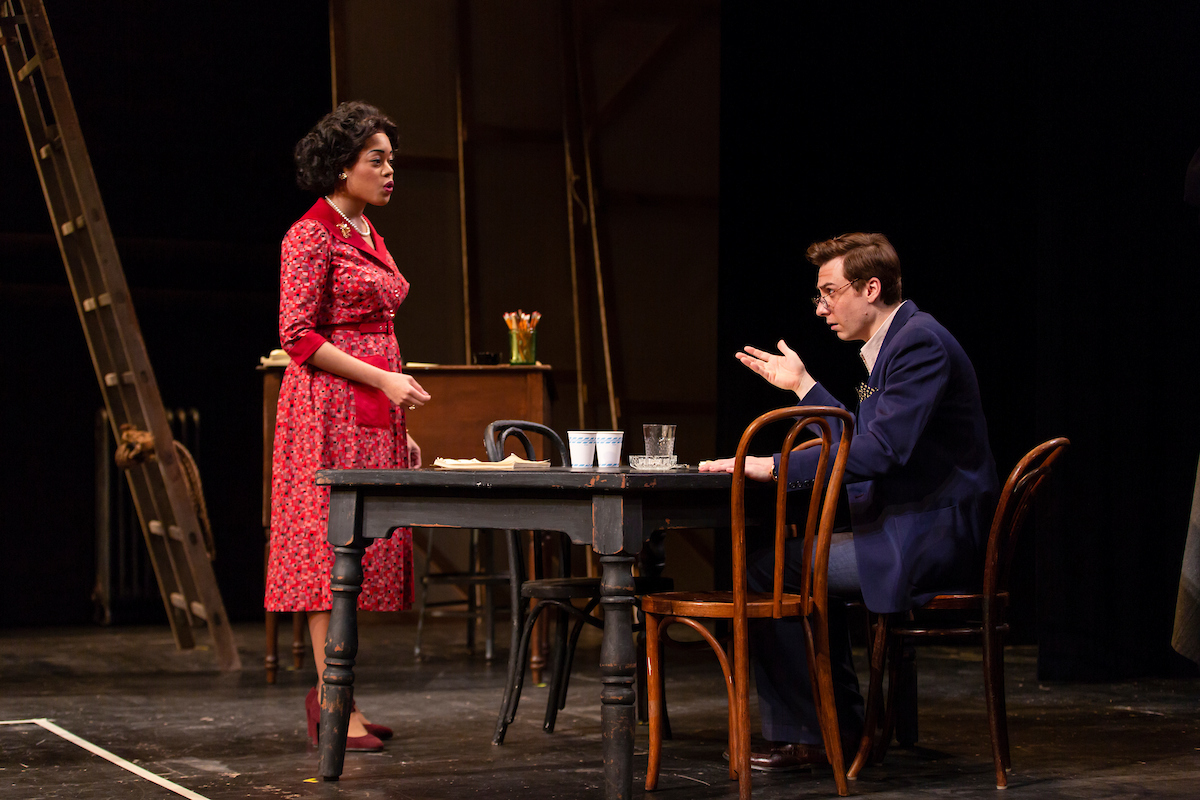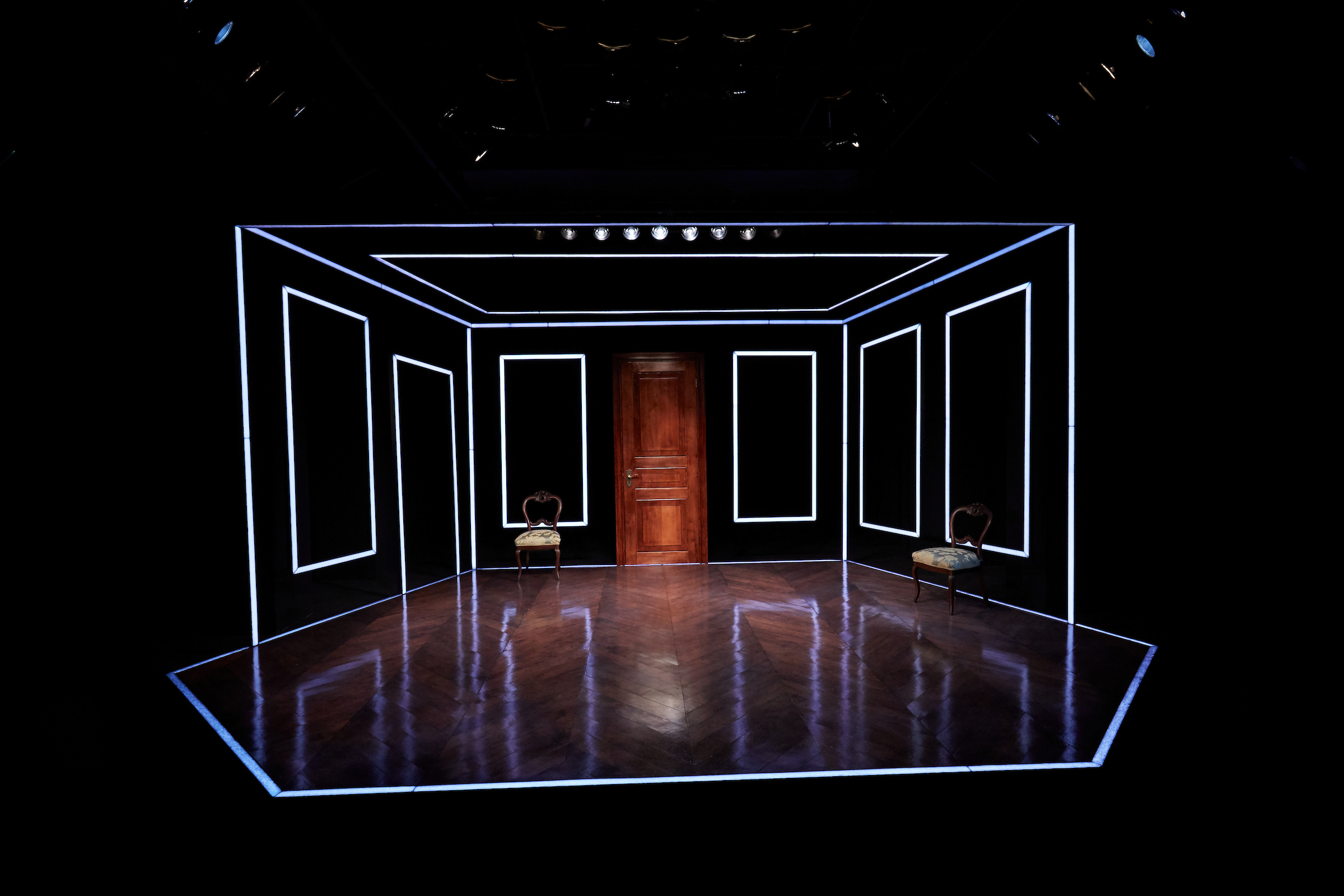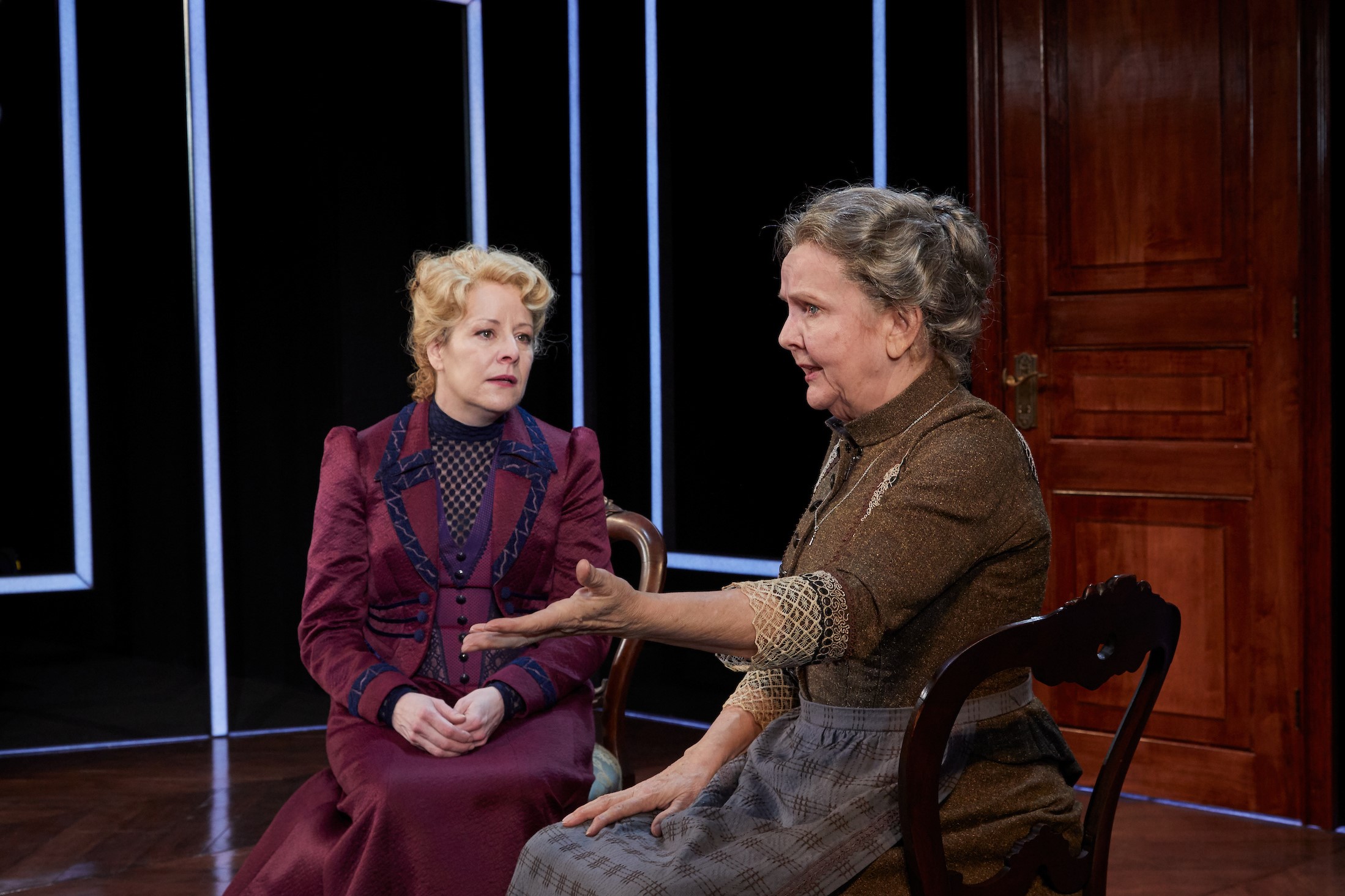Review of Girlfriend, TheaterWorks
At 80some minutes, Girlfriend, the newish musical at TheaterWorks, directed by Rob Ruggiero, is short, and, with the music from Nebraska-born musical artist Matthew Sweet featured, it is certainly Sweet. The play, by Todd Almond, is indeed sweet as its boy meets boy story set in Alliance, Nebraska, 1993—while it has drama—is mostly easygoing. The two characters are Will (David Merino), a gay senior in high school, and Mike (CJ Pawlilowski), a still closeted senior. Mike’s opening overture to Will is the gesture of giving him a tape of Matthew Sweet’s LP, Girlfriend (released 1991). The duo’s story is set to Sweet songs mostly from that album.
If this sounds to you like a rather thin Book—take a bunch of songs and construct a story to accompany them—then you and I agree. Unlike some instances of rock we might imagine, Sweet’s songs have the strength of being unprovocative. They can be somewhat propulsive, like the title song, and somewhat lyrical, like “Your Sweet Voice,” and one or two—“Winona,” “Evangeline”—have interesting lyrics. The live band playing them at the back of the stage—Evan Zavada, conductor, keys, vocals; Billy Bivona, guitar 1; Julia Packer, guitar 2, vocals; Adam Clark, bass, vocals; Elliot Wallace, drums—can be as fun to watch as the play’s action.
Will (David Merino), Mike (CJ Pawlikowski) and the band in Girlfriends, directed by Rob Ruggiero, at TheaterWorks, photos courtesy of TheaterWorks
The story is comprised of very static scenes: Will in his bedroom with his boombox; Mike in his with his more imposing all-in-one stereo; the friends sitting in Mike’s car at a drive-in, watching the same film—about a superhero alien whose alter-ego is a nun named Evangeline—night after night. Eventually (spoiler alert!) they do get to Mike’s bedroom while his somewhat domineering father is away (we never meet him, but he seems to be pressuring Mike into maintaining relations with his girlfriend, whom we also never see).
The play insists on being a two-hander so any schoolmates who might sneer at this budding romance never show up. Any threat to the status quo that this same-sex couple poses must be imagined (mostly rude stares from the other guys on the baseball team Mike plays on). All of which is deliberate. This romance isn’t about overcoming parental disapproval (which certainly factors in for all sorts of couples for all sorts of reasons) or about overcoming peer pressure (ditto), but about whether or not Mike really loves Will.
Will (David Merino)
Will, who is played with disarming, outgoing cheer and charm by Merino, is clearly the girl in this relationship. He sits at home waiting to be asked out; when he is, he always goes. His passivity might be seen as comic, or pathetic. Here, it just is. The implication is that, as a gay boy in a predominantly hetero culture, he has to take what he can get. What he gets is Mike’s vacillations. Is giving music to someone a sexual overture? Depends. Is going to the drive-in together an invitation to make-out? Depends. What the play mostly explores is the gray area of that “depends.” Will lets us know he’s up for it but not enough to make a first move. As Mike, Pawlikowski plays obtuse well. The guy acts like leading Will on is the last thing on his mind, though of course it’s the first thing on Will’s. Whether or not Mike can admit that or not is really the only question here.
It’s all coy and almost-not-quite closeted. We’re waiting for a big breakup or big breakthrough. Things don’t get nasty, but they do get a little more complicated: Mike is off to college; Will, apparently, can’t think of anything better to do than stay in this Nebraskan town some 300 miles from the university in Lincoln. Was this all just an experiment for Mike before moving on?
Mike (CJ Pawlikowski)
Almond’s approach to dialogue is to stick with the demotic. These guys need those songs because they have nothing much to say. The best dialogue is Will trying gently to suggest that the movie isn’t all that good. Indeed, we might easily believe Mike is actually straight since he has so little of interest to say. Will, whatever he may feel for Mike, is clearly slumming.
The opening weekend matinee I saw featured an audience comprised mostly of people who might well have grandchildren the ages of these characters. They seemed warmly touched by the romance. The play might strike with a bit more force played for an audience closer to the boys’ ages. In fact, that would be the perfect audience for this play—and, I suppose, fans of Matthew Sweet’s Girlfriend. The band do the songs justice, Merino and Pawlikowski have suitable singing voices, and the sound design, by Joshua D. Reid, is perfectly adapted to the Wadsworth’s auditorium.
Will (David Merino), MIke (CJ Pawlikowski) and the band
Girlfriend
Book by Todd Almond
Music & Lyrics by Matthew Sweet
Directed by Rob Ruggiero
Music Direction by Evan Zavada
Set Design: Brian Prather; Costume Design: Blair Gulledge; Lighting Design: Rob Denton; Sound Design: Joshua D. Reid; Hair: John McGarvey; Production Manager: Bridget Sullivan; Stage Manager: Kate J. Cudworth
Cast: David Merino; CJ Pawlikowski
Band: Evan Zavada, conductor, keys, vocals; Billy Bivona, guitar 1; Julia Packer, guitar 2, vocals; Adam Clark, bass, vocals; Elliot Wallace, drums
TheaterWorks
At the Wadsworth
March 22 to April 28, 2019
























